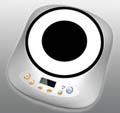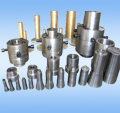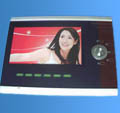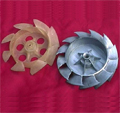

| Address: | PDS Enterprise Inc. 1650 West Artesia Blvd, Suite 278 Gardena, CA90248 |
| Phone: | 1-843-408-0142 |
| Email: | pdsenterprise@gmail.com sales@coolprototyping.com |


Home>Glossary
271. Part design process
Many factors affect plastic-part design. Among these factors are: functional requirements, such as mechanical loading and ultraviolet stability; aesthetic needs, such as color, level of transparency, and tactile response; and economic concerns, such as cost of materials, labor, and capital equipment. These factors, coupled with other design concerns - such as agency approval, processing parameters, and part consolidation.
Like a successful play in football, successful plastic product design and production requires team effort and a well-developed strategy. When designing plastic parts, your team should consist of diverse players, including conceptual designers, stylists, design engineers, materials suppliers, mold makers, manufacturing personnel, processors, finishers, and decorators. Your chance of producing a product that successfully competes in the marketplace increases when your strategy takes full advantage of team strengths, accounts for members' limitations, and avoids overburdening any one person. As the designer, you must consider these factors early in strategy development and make adjustments based upon input from the various people on the design team.
Solicit simultaneous input from the various "players" early in product development, before many aspects of the design have been determined and cannot be changed. Accommodate suggestions for enhancing product performance, or for simplifying and improving the various manufacturing steps such as mold construction, processing, assembly, and finishing. Too often designs pass sequentially from concept development to manufacturing steps with features that needlessly complicate production and add cost.
Early input from various design and manufacturing groups also helps to focus attention on total product cost rather than just the costs of individual items or processes. Often adding a processing step and related cost in one area produces a greater reduction in total product cost. For example, adding snap latches and nesting features may increase part and mold costs, and at the same time, produce greater savings in assembly operations and related costs. Likewise, specifying a more-expensive resin with molded-in color and UV resistance may increase your raw-material cost, while eliminating painting costs.
When designing and developing parts, focus on defining and maximizing part function and appearance, specifying actual part requirements, evaluating process options, selecting an appropriate material, reducing manufacturing costs, and conducting prototype testing.
For the reasons stated above, these efforts should proceed simultaneously.
Here are some samples we have done before, please kindly take a look:
 We are constantly looking for new products in order to grow our business and Invention Home has enabled us to streamline that process much more quickly.
We are constantly looking for new products in order to grow our business and Invention Home has enabled us to streamline that process much more quickly. Marsha Dunmyre
CA, U.S.A
BROWSE MORE
Cool Prototyping provides "one-stop" product design service: rapid prototyping, plastic molds, custom molds, production tooling and plastic molding.
Cool Prototyping Copyright 2008-2009 © All Rights Reserved. Rapid Prototyping
Cool Prototyping Copyright 2008-2009 © All Rights Reserved. Rapid Prototyping






